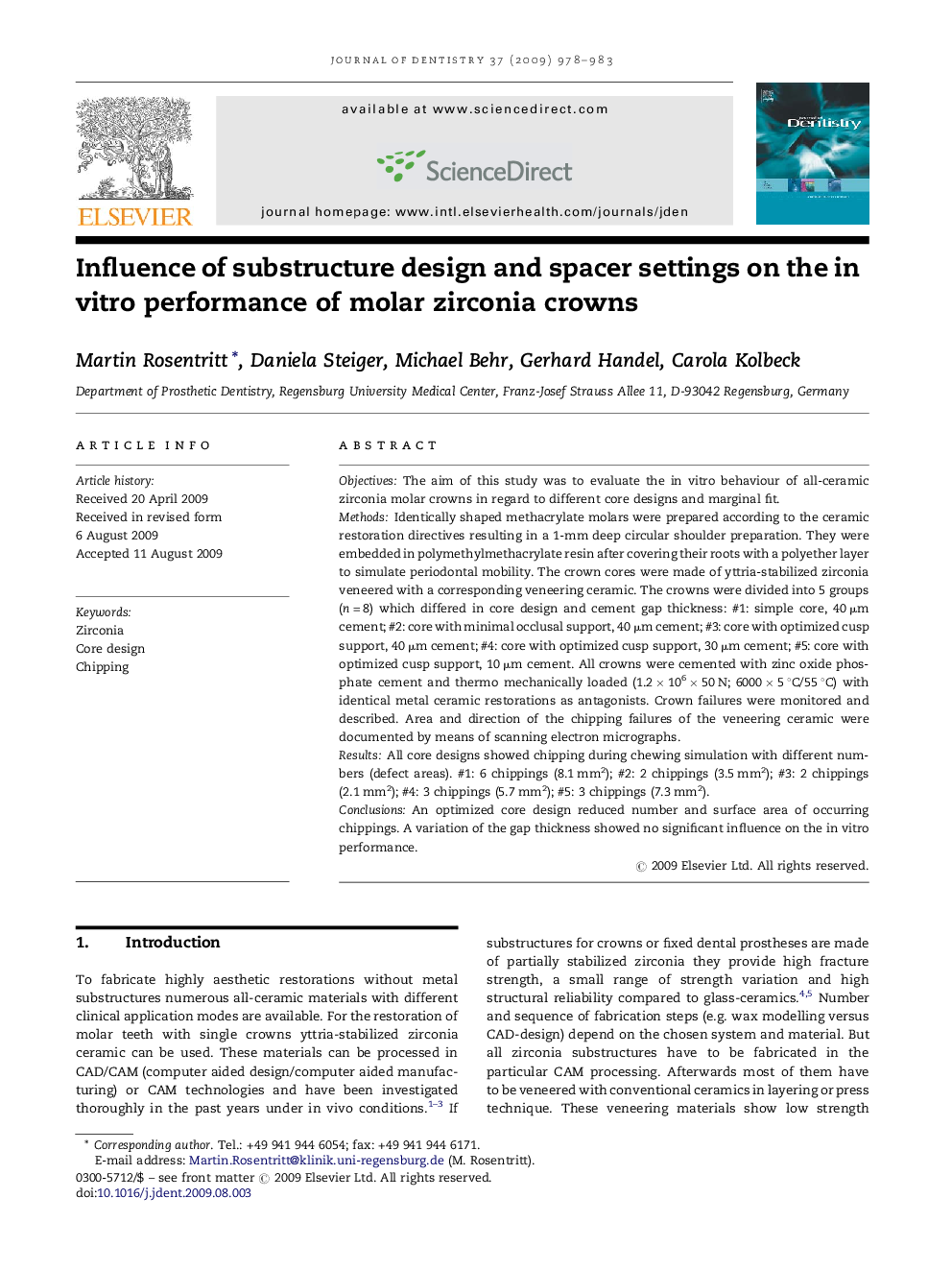| Article ID | Journal | Published Year | Pages | File Type |
|---|---|---|---|---|
| 3145584 | Journal of Dentistry | 2009 | 6 Pages |
ObjectivesThe aim of this study was to evaluate the in vitro behaviour of all-ceramic zirconia molar crowns in regard to different core designs and marginal fit.MethodsIdentically shaped methacrylate molars were prepared according to the ceramic restoration directives resulting in a 1-mm deep circular shoulder preparation. They were embedded in polymethylmethacrylate resin after covering their roots with a polyether layer to simulate periodontal mobility. The crown cores were made of yttria-stabilized zirconia veneered with a corresponding veneering ceramic. The crowns were divided into 5 groups (n = 8) which differed in core design and cement gap thickness: #1: simple core, 40 μm cement; #2: core with minimal occlusal support, 40 μm cement; #3: core with optimized cusp support, 40 μm cement; #4: core with optimized cusp support, 30 μm cement; #5: core with optimized cusp support, 10 μm cement. All crowns were cemented with zinc oxide phosphate cement and thermo mechanically loaded (1.2 × 106 × 50 N; 6000 × 5 °C/55 °C) with identical metal ceramic restorations as antagonists. Crown failures were monitored and described. Area and direction of the chipping failures of the veneering ceramic were documented by means of scanning electron micrographs.ResultsAll core designs showed chipping during chewing simulation with different numbers (defect areas). #1: 6 chippings (8.1 mm2); #2: 2 chippings (3.5 mm2); #3: 2 chippings (2.1 mm2); #4: 3 chippings (5.7 mm2); #5: 3 chippings (7.3 mm2).ConclusionsAn optimized core design reduced number and surface area of occurring chippings. A variation of the gap thickness showed no significant influence on the in vitro performance.
